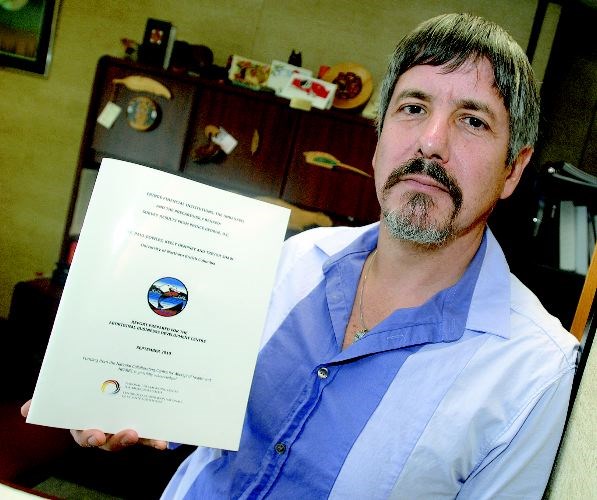Banks and credit unions need to "find ways to innovate their services" to prevent the financially-stressed from turning to payday loan stores in times of need and digging themselves into deeper holes in the process.
That's one of the conclusions three UNBC researchers set out in a report prepared for the Prince George Aboriginal Business and Community Development Centre on "fringe financial institutions, the unbanked and the precariously banked" in Prince George.
The authors, economics professor Paul Bowles and researchers Keely Dempsey and Trevor Shaw, also suggest creation over the longer term of "new institutions designed specifically to meet the needs of low income individuals."
There have been attempts made elsewhere, they note in the report, although they've been money losers.
In 1996, Four Corners Community Savings was established in east Vancouver with a $300,000 annual subsidy from the provincial NDP government, but in 2004 the plug was pulled by the subsequent Liberal government, citing accumulated losses totaling $6 million.
But that same year, Vancouver City Savings Credit Union, in a partnership with the Portland Hotel Society, opened Pigeon Park Savings. As of 2007, PPS was serving 4,200 members but was losing about $100,000 a year.
However, PPS is an improvement over Four Corners, the authors contend, in that it is part of a larger chain of 59 Vancity branches and so, is not subject to as onerous regulatory requirements of its stand-alone predecessor.
"PPS offers clients cheque-cashing, unlimited withdrawals, bill payments, money orders and ATM access all for a simple fee of $5 per month," the authors wrote. "Currently, PPS is promoting financial literacy amongst its members and the community in an effort to provide the 'tools to make sound decisions' and to effectively deter the use of fringe financial institutions."
With the report in hand, ABCDC president Ray Gerow said the next step will be to raise some funds to move to the business planning stage to explore options for Prince George.
"I would think the options that will be explored would be looking at both short and long term solutions, which may or may not include an 'institution,'" he said. "It's too early yet to be able to effectively gaze into that crystal ball, but for sure we are examining what is happening with Pigeon Park Savings in Vancouver to see if it is a suitable model for Prince George."
The report is centred on a survey, conducted over an eight-month period, of 176 people found exiting payday loan stores. They identified two types of users - those who frequent the stores at least once a month and are likely to rely on income assistance and disability payments and those who have accounts in banks or credit unions but occasionally turn to payday loans to meet short-term needs - although a large portion of that group frequents the stores once a month or more.
B.C. legislation limits the stores to a maximum interest rate of 23 per cent and $1,500 in fees on short-term loans, defined as up to 62 days. But that still adds up, the authors indicate, as a lender can charge $64.40 for a 10-day loan of $280, which works out to 839.5 per cent when annualized.
Nonetheless, the authors found that their patrons preferred payday loan outlets in part because their hours and locations are more convenient and holds are less likely to be placed on cheques.
Other factors, like easy access to emergency funding for car repairs, tax refund loans and wire transfers and bad credit records that preclude patrons from borrowing elsewhere were also important.
Banks and credit union advertising appears focused on higher income clients, the authors note, and suggest making potential low-income clients aware of low-cost chequing is available with appropriate identification.
They also suggest extended hours in certain downtown locations on days when government cheques are issued. And they suggest banks and credit unions could "experiment in selection locations" with shorter wait times than the three to five days they typically hold on non-government cheques.
"In this respect it is worth noting that RBC had experimented with a Cash & Save concept in Toronto in an effort to provide more relevant services such as cheque cashing, bill payments, money orders and wire transfers to low-income households at more reasonable rates than those charged by the fringe financial institutions."
In June 2010, the authors counted 19 "fringe financial institutions," most of them concentrated downtown, equal to the total number of bank and credit union branches in the city. Between 1,500 and 9,000 people in the city are without a bank account, they estimate.



